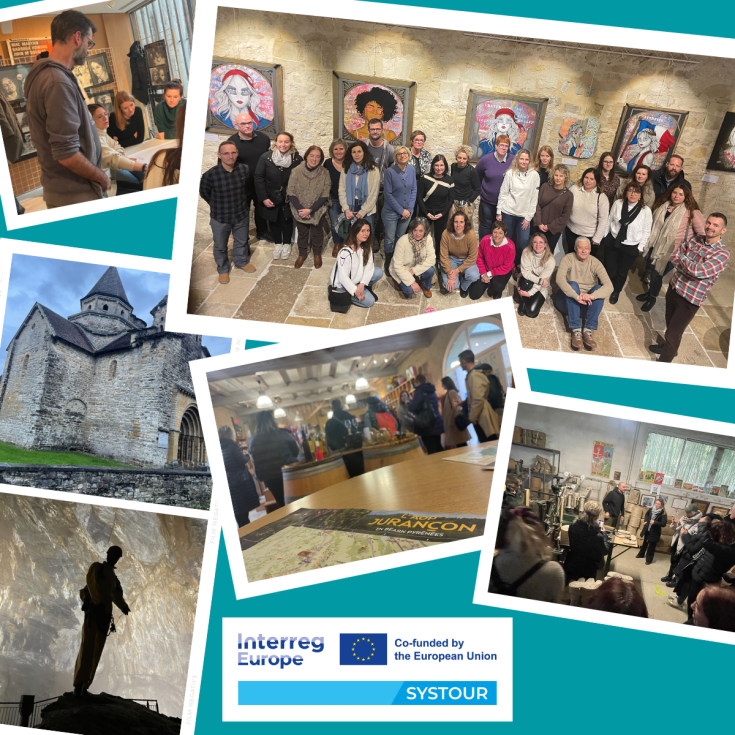The 6th Interregional event in Nouvelle-Aquitaine Region
APESA, in partnership with the Basque Country Tourist Office, the Haut Béarn Tourist Office, the "Montagne Béarnaise" territory, and the Region Nouvelle-Aquitaine, successfully organized the final study visit of the Interreg SYSTOUR project in Nouvelle-Aquitaine on November 20-21, 2024. The event brought together 26 participants from six institutions representing Italy, France, Hungary, Spain, and Poland.
Focusing on strategies to promote sustainable tourism that respects local territories, the visit highlighted best practices from two rural regions in Nouvelle-Aquitaine: Béarn and Soule Xiberoa. Participants explored diverse approaches to tourism, encompassing natural, industrial, and cultural heritage.
Discovering Béarn …
The visit began in Pau, with an introduction to Nouvelle-Aquitaine’s tourism strategy through the regional Ssustainable tourism roadmap. Local initiatives were also featured, including a presentation by Seignanx.com, a regional association advocating for shared services that benefit both residents and visitors.
Participants then traveled to La Commande, located in the heart of the Jurançon wine region and on the Saint-Jacques-de-Compostelle pilgrimage route. The Commanderie de Lacommande, a listed historic monument, served as a centerpiece for discussions on local tourism. The association Flaning Béarn presented their innovative discovery tours, which combine heritage, culture, gastronomy, and the label “Vignoble et Découverte” was also meant to explain how to showcase the region's vineyards, and promote seasonal employment
The day also included a workshop on the TOKIKOA label, which promotes the use of local products in Northern Basque Country restaurants. This session allowed participants to share experiences and propose improvements to this initiative.
A mobility strategy presentation shed light on sustainable transport solutions for the Haut Béarn territory. The session concluded with a shepherd sharing her experiences, followed by a tasting of regional cheeses.
The day ended with a visit to La Transhumance restaurant, located in the picturesque Aspe Valley. Once a railway station for sheep transhumance, this venue has been transformed into an inn for hikers, emphasizing accessibility and sustainability—it operates successfully even without a parking lot for cars.
… and Soule Xiberoa
On the second day, participants visited the Grottes de la Verna, a remarkable geological site known for its vast dimensions. This visit highlighted how partnerships between private companies, such as a hydroelectric power producer, and local authorities have developed tourism around this unique natural attraction.
In the afternoon, the focus shifted to Soule’s industrial and cultural heritage. Participants visited a small espadrille manufacturer in Mauléon, the espadrille capital of Soule, and explored the Church of L’Hôpital-Saint-Blaise, a UNESCO World Heritage site. The mayor presented ongoing efforts to preserve and promote this cultural landmark, offering visitors a truly distinctive experience.

